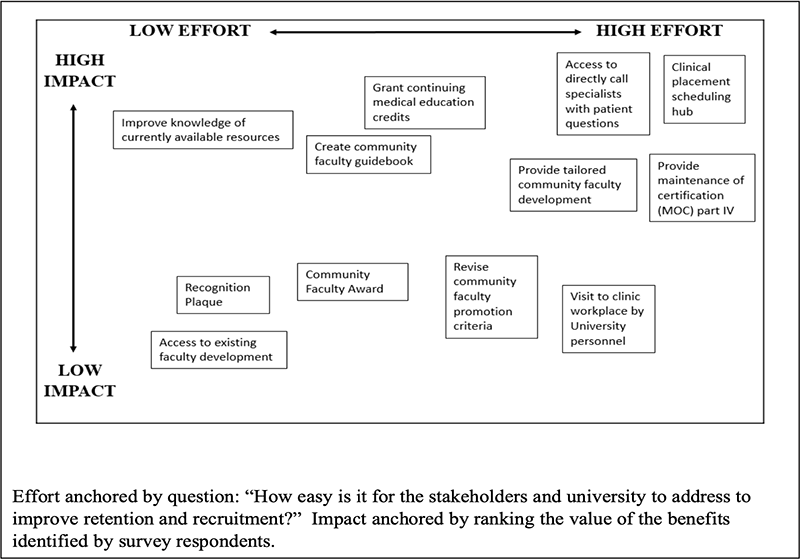BACKGROUND AND OBJECTIVES: Because of the importance of and increasing competition for unpaid community faculty’s time, we qualitatively evaluated the adjunct community faculty experience in order to identify mechanisms to improve the recruitment, training, and retention of these faculty members.
METHODS: The authors captured community faculty and key stakeholder opinion through interviews, focus groups, and a survey to elucidate their perspective of roles, responsibilities, facilitators, and barriers for providing quality teaching and learning experiences. After evaluating the data, we created an impact/effort matrix to guide suggested changes.
RESULTS: Key medical education stakeholders reported adjunct community faculty members were critical to delivery of the medical school curriculum and shared methods and barriers for retaining members. Adjunct community faculty focus groups revealed two major themes: (1) personal experience and motivation, and (2) individual advantages and institutional barriers that influence being a faculty member. The survey and impact/effort matrix led to interventions including an Office of Community Faculty to implement recruitment and retention programs and provide more comprehensive oversight, a clinical scheduling hub, improved access to specialists for community faculty, and awards to recognize the critical contributions of community faculty members.
CONCLUSIONS: As competition for community placements increases, including community faculty voices to inform action is an effective investment that enables an institution to direct resources towards interventions that maximize their support and engagement. Including community faculty perspectives also increases faculty’s ability to participate in training the next generation of physicians.
